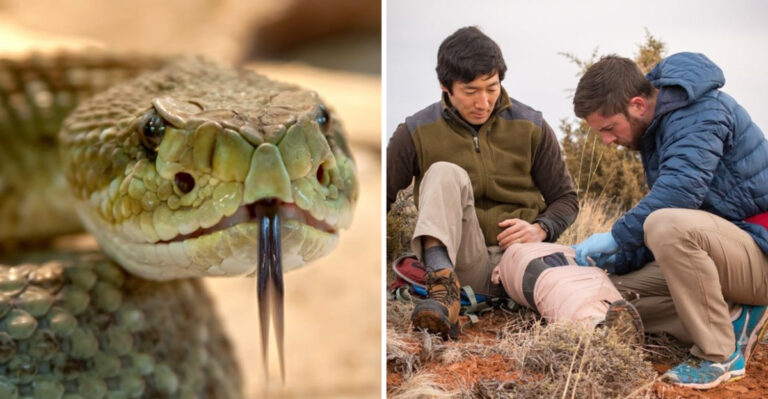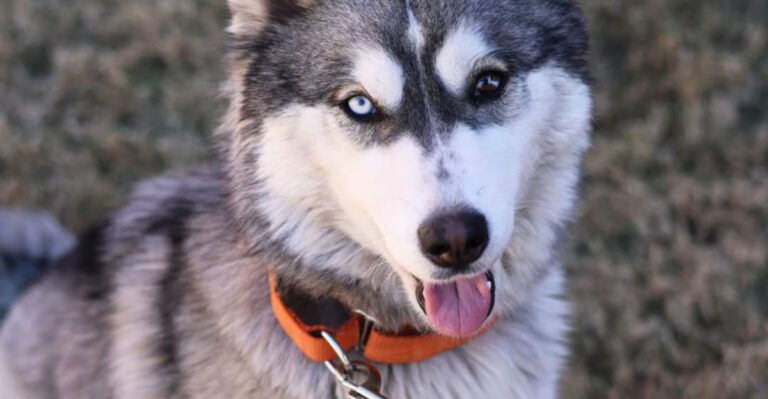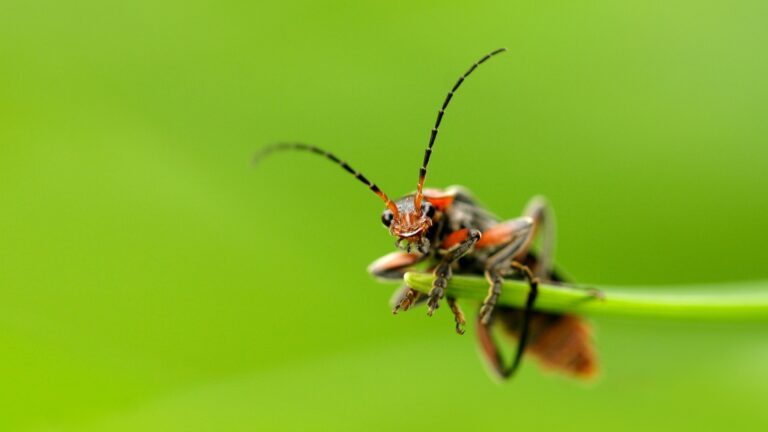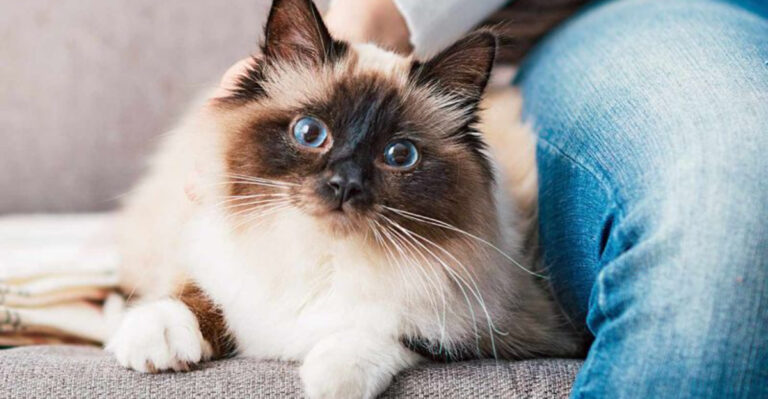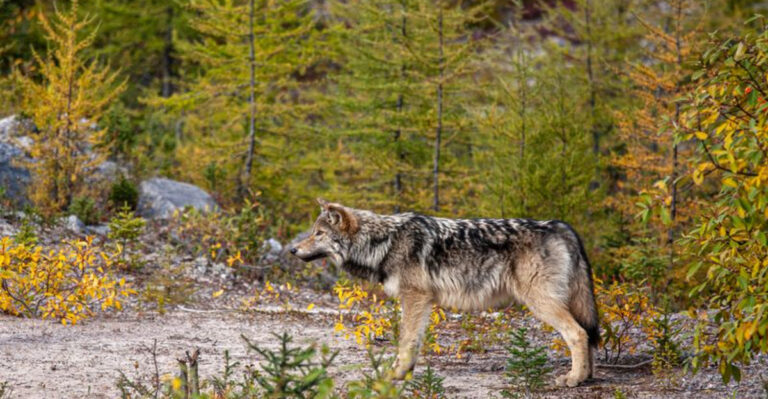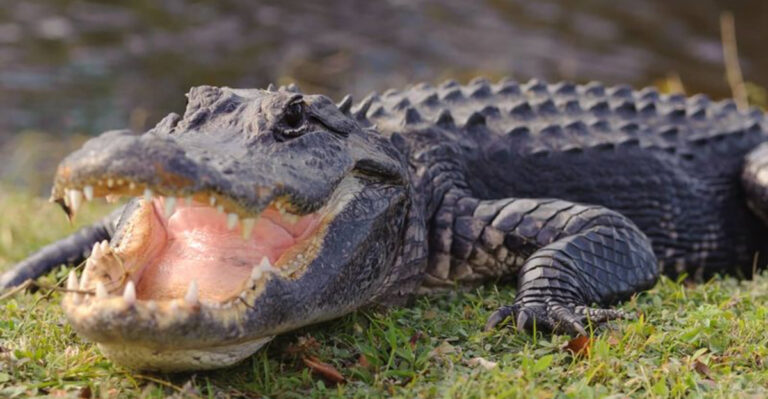15 Dog Breeds That Don’t Exist Anymore (And The Heartbreaking Reasons Why)
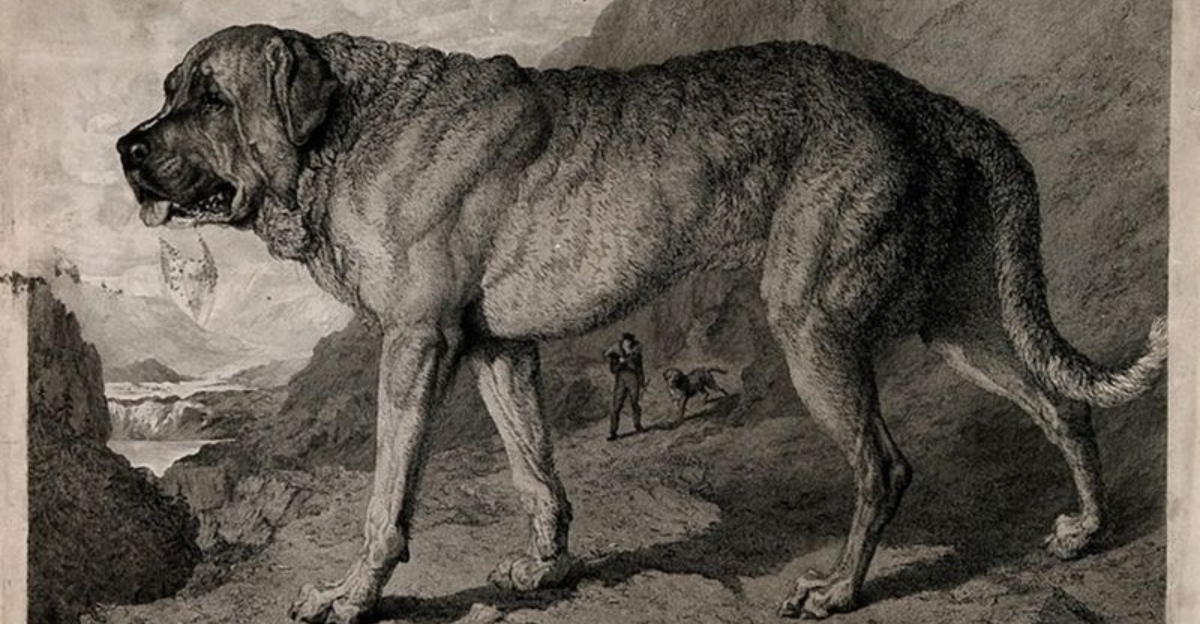
Dogs have been our loyal companions for thousands of years, but not all breeds have survived the test of time.
Throughout history, numerous dog breeds have disappeared due to changing human needs, natural disasters, or simply falling out of fashion.
These once-beloved companions now exist only in old paintings, photographs, and historical records. Let’s remember these forgotten canines and understand what led to their extinction.
1. The Turnspit Dog
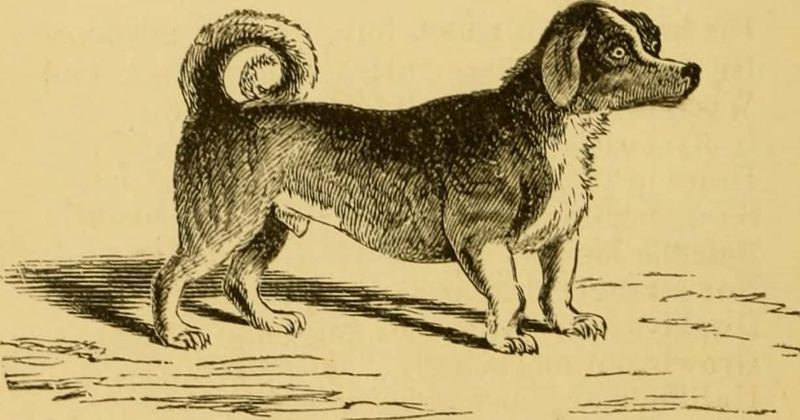
Bred specifically for kitchen work, these short-legged pups ran on wheel mechanisms like hamsters to turn meat-roasting spits. Their tireless nature made them perfect for this hot, exhausting job in medieval and Renaissance kitchens.
When technology advanced and mechanical rotisseries appeared in the 1800s, the need for these hardworking dogs vanished almost overnight.
By the early 20th century, the breed had completely disappeared, victims of progress and changing culinary practices.
2. The St. John’s Water Dog
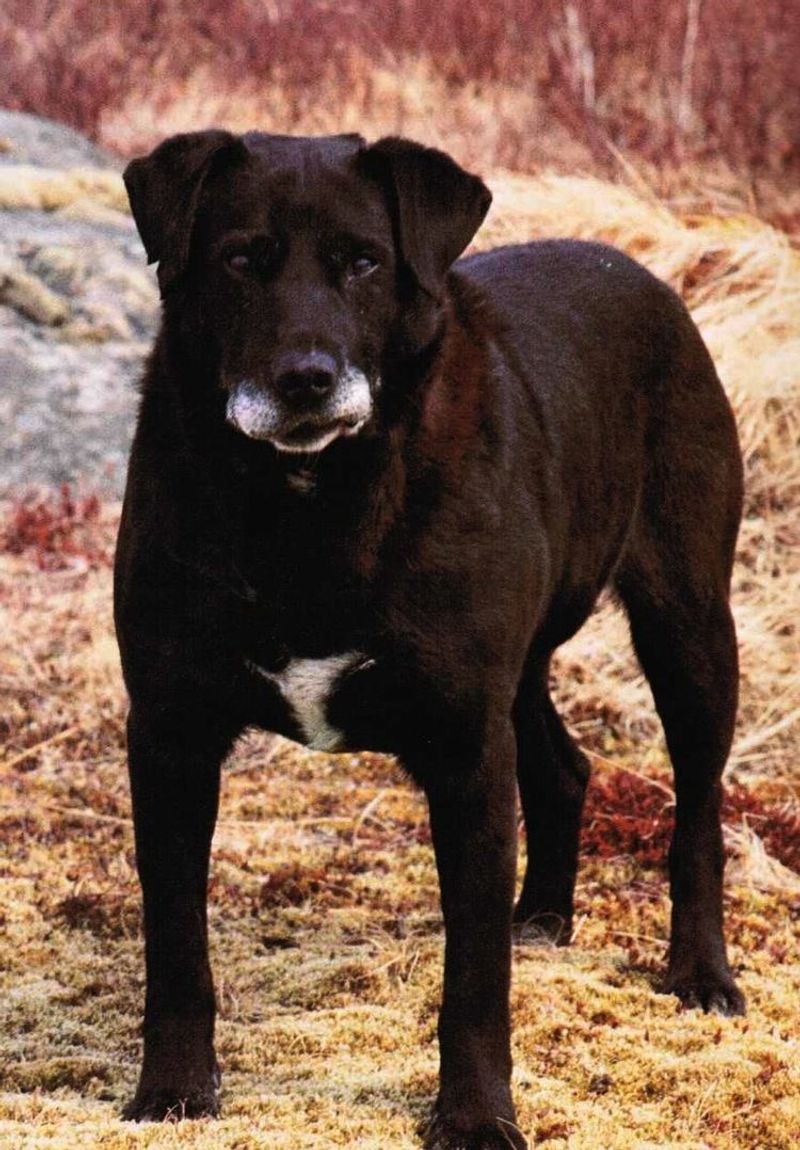
Fishermen’s best friends in Newfoundland, these medium-sized black dogs were renowned for their swimming abilities and retrieving nets in icy waters. Their friendly temperament and work ethic made them indispensable on fishing boats.
Heavy taxation on dog ownership in Canada during the 1880s, combined with strict quarantine laws in the UK, severely limited breeding opportunities.
The last known specimens disappeared in the 1980s, but their legacy lives on—they’re direct ancestors of today’s Labrador Retrievers.
3. The Molossus
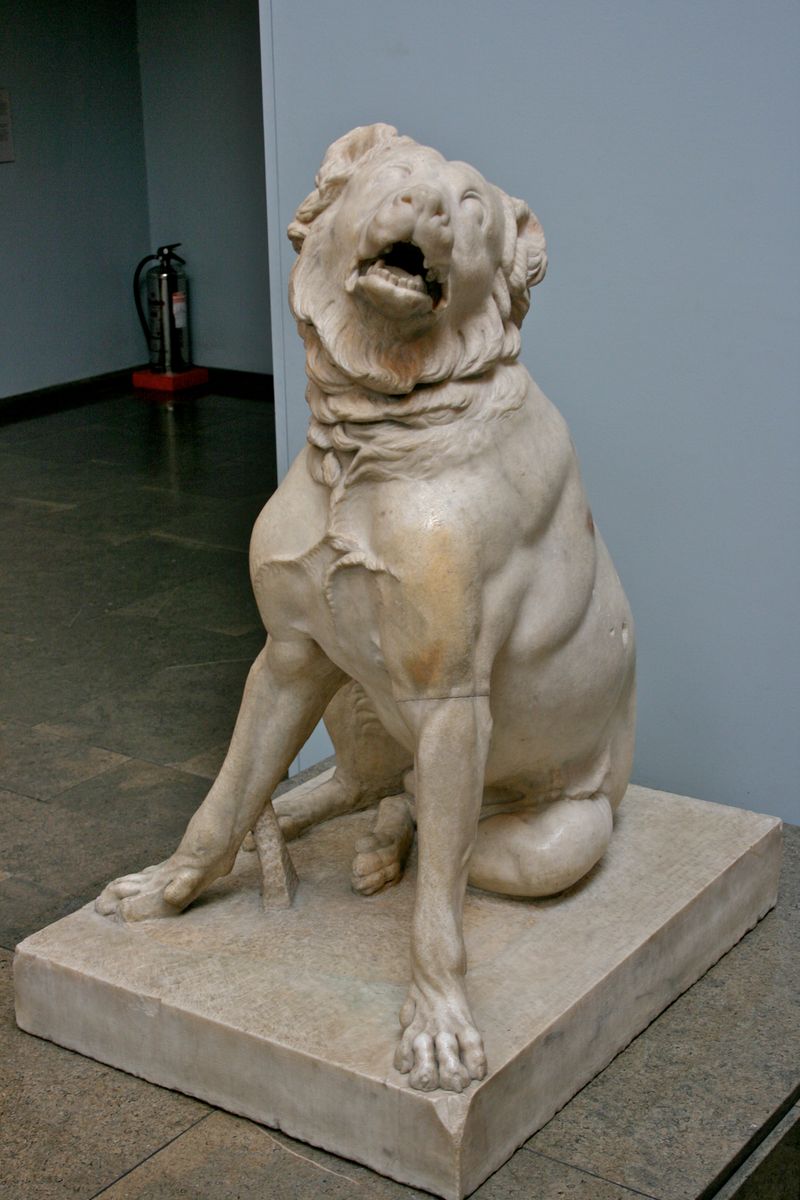
Ancient Romans revered these massive guardian dogs, using them for warfare, protection, and hunting. With powerful jaws and imposing stature, they struck fear into enemies across the Roman Empire.
As the empire fell, dedicated breeding programs collapsed. The pure Molossus bloodline gradually disappeared through crossbreeding with local dogs throughout Europe and Asia. While extinct as a distinct breed, their genetic influence remains in modern mastiffs, giving us a shadow of these legendary war dogs.
4. The Talbot Hound
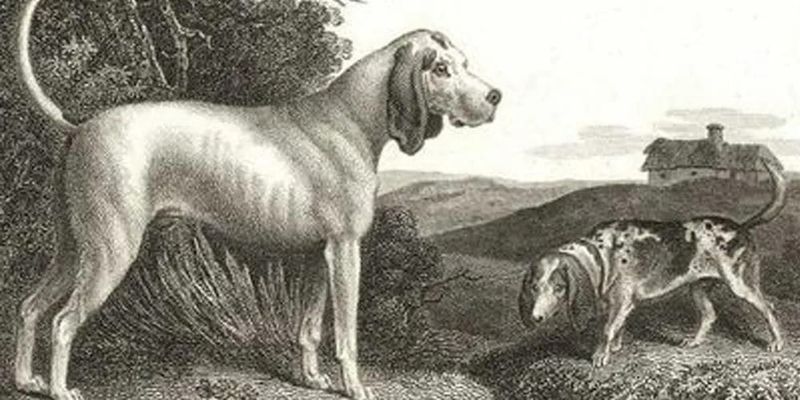
Pure white hunting companions of medieval nobility, Talbots were celebrated for their exceptional scenting abilities and melodious baying. Their distinctive appearance—snow-white coats and drooping ears—made them favorites in heraldry and family crests across Europe.
Their decline began in the 16th century when faster hounds became fashionable for fox hunting. By the early 1700s, these dignified trackers had disappeared entirely, outcompeted by speedier breeds. Their bloodline contributed to modern scent hounds like Beagles and Bloodhounds.
5. The Kuri Dog
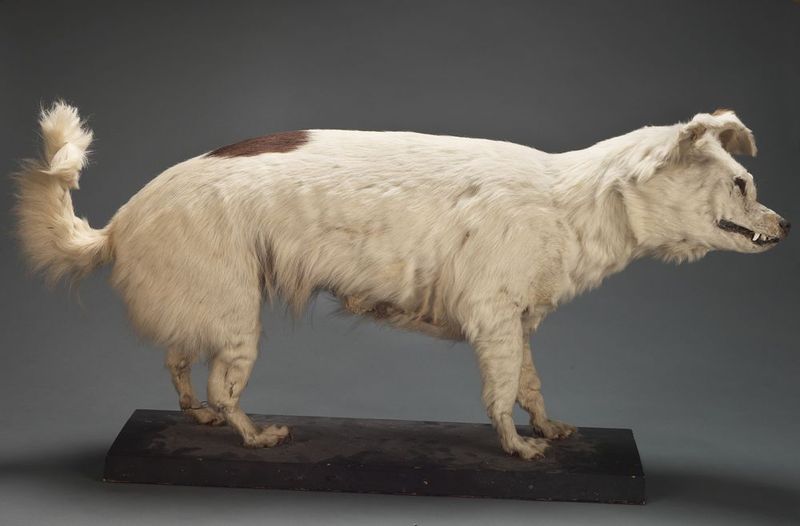
Sailing alongside Polynesian explorers, these fox-faced companions helped settle New Zealand around 1280 CE. Maori tribes valued them for hunting, protection, and their thick fur used in ceremonial garments.
European colonization in the 1800s brought new dog breeds that freely interbred with the Kuri. Disease and deliberate culling further reduced their numbers. The last purebred Kuri died in the 1860s, leaving only preserved pelts in museums and skeletal remains at archaeological sites to tell their story.
6. The Moscow Water Dog
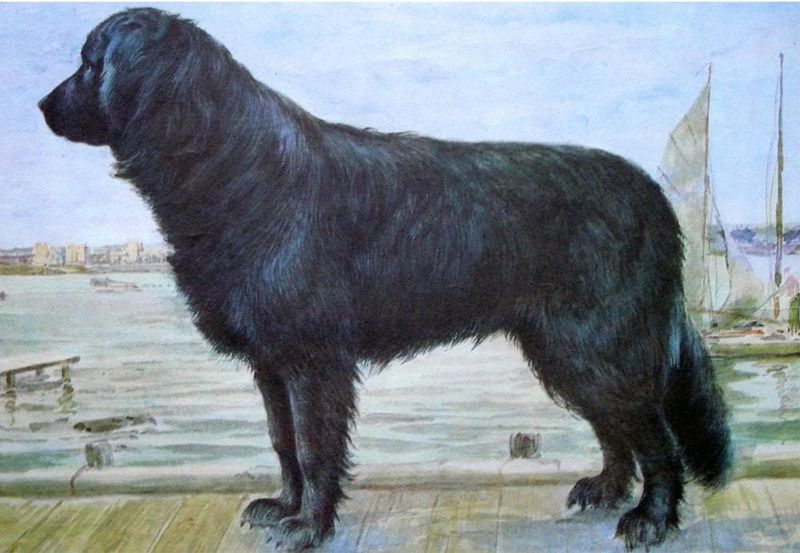
Soviet military efforts after World War II created this breed specifically for water rescues. Scientists crossed Newfoundlands, East European Shepherds, and Caucasian Shepherds to create the perfect water rescue dog.
Unfortunately, breeding priorities went terribly wrong. Instead of rescuing drowning people, these dogs had an alarming tendency to bite victims they encountered in water. The Soviet military abandoned the breeding program by the 1980s, and the breed vanished shortly after—a cautionary tale of well-intended breeding gone awry.
7. The Paisley Terrier
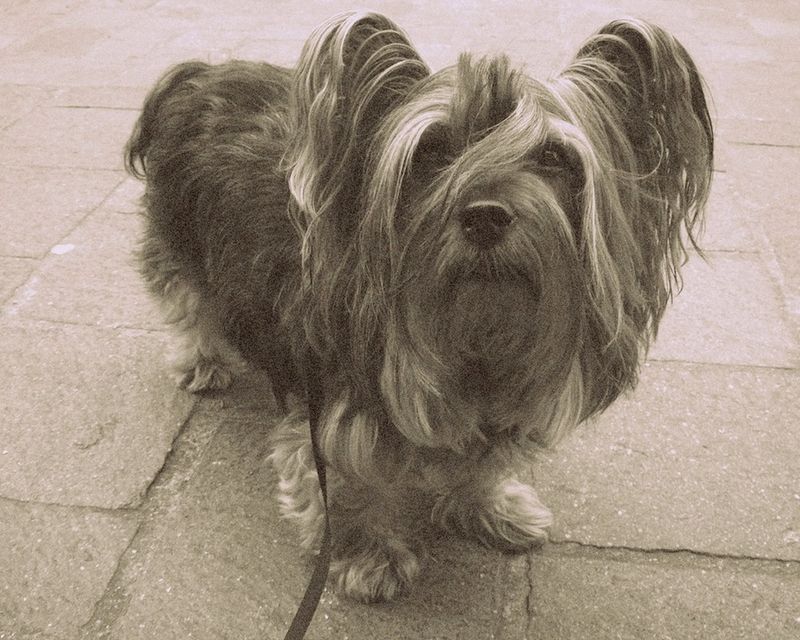
Fashion drove both the creation and extinction of these silky-coated show dogs from Scotland. Developed in the 19th century from Skye Terriers, their extraordinarily long, glossy coats made them darlings of Victorian show rings.
Cruel breeding practices focused solely on coat length led to health problems. When dog shows began favoring function over form in the early 1900s, the Paisley fell from favor. They disappeared completely by the 1960s, though their genetic contribution lives on in Yorkshire Terriers.
8. The Salish Wool Dog
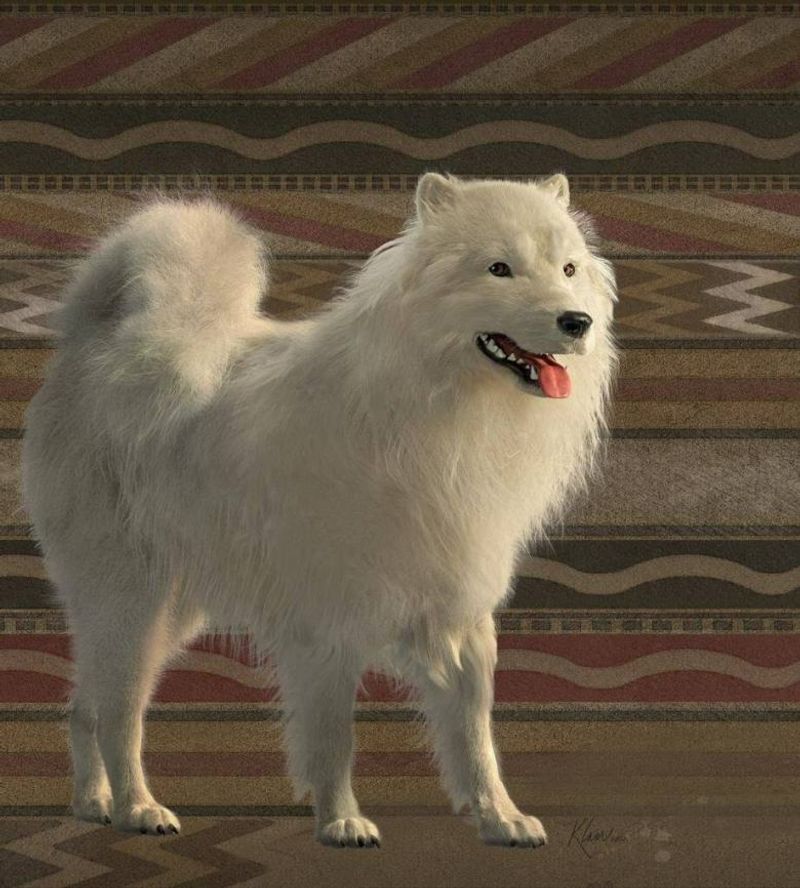
Indigenous peoples of the Pacific Northwest maintained these small white dogs for thousands of years, primarily for their unusual wool-like fur. Coast Salish women would shear them like sheep and spin the hair into prized blankets and ceremonial garments.
European colonization brought both sheep wool and devastating diseases to native communities. Traditional knowledge about maintaining the breed’s purity was lost amid cultural disruption. By the 1850s, the unique wool dogs had merged with other dog populations, disappearing forever despite their cultural significance.
9. The Braque Du Puy
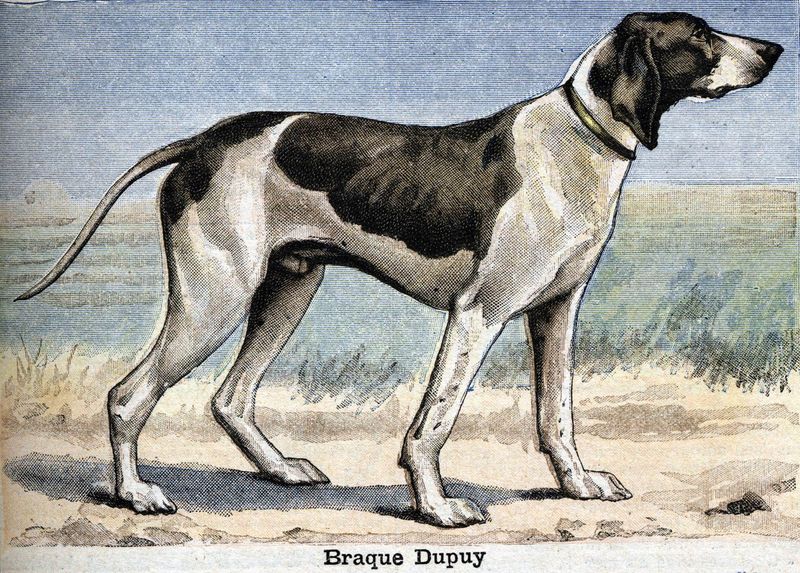
French aristocrats developed these elegant hunting dogs in the 19th century, prizing their remarkable pointing abilities and speed in the field. Their distinctive tricolor coat pattern and refined build made them sought-after companions for upland bird hunting.
The breed’s tight association with nobility became its downfall during the French Revolution. Most were killed alongside their aristocratic owners or abandoned when estates were seized. A brief revival attempt in the early 1900s failed, and by the 1970s, the last purebred specimens had vanished.
10. The Bullenbeisser
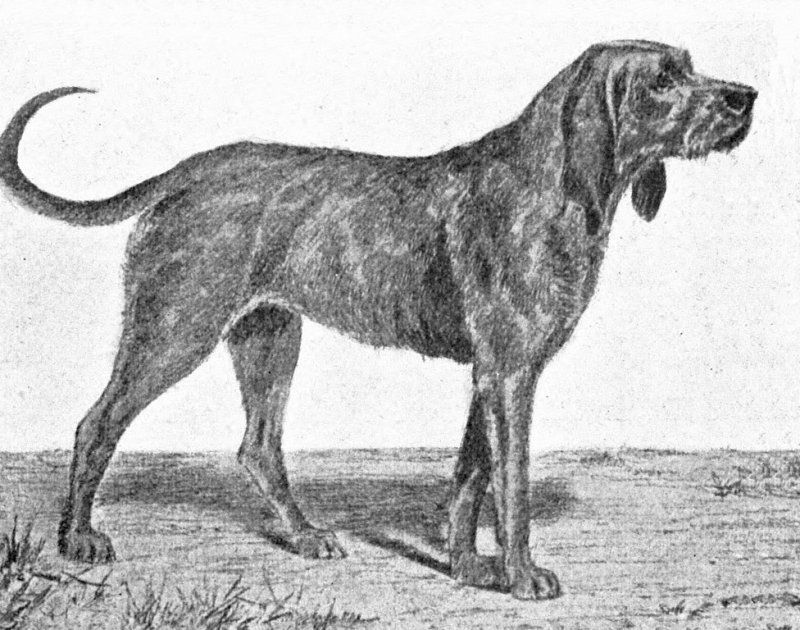
“Bull-biter” in German, these powerful dogs were medieval Europe’s premier big-game hunters. Nobility used them to take down bears, boars, and bulls, valuing their incredible jaw strength and fearless nature.
Changing hunting practices and urbanization reduced demand for these specialized hunters. By the 1800s, they were crossbred with English Bulldogs by German breeders seeking a new type of working dog. Though extinct as a pure breed since the 1900s, their genes live on in modern Boxers.
11. The Tahltan Bear Dog
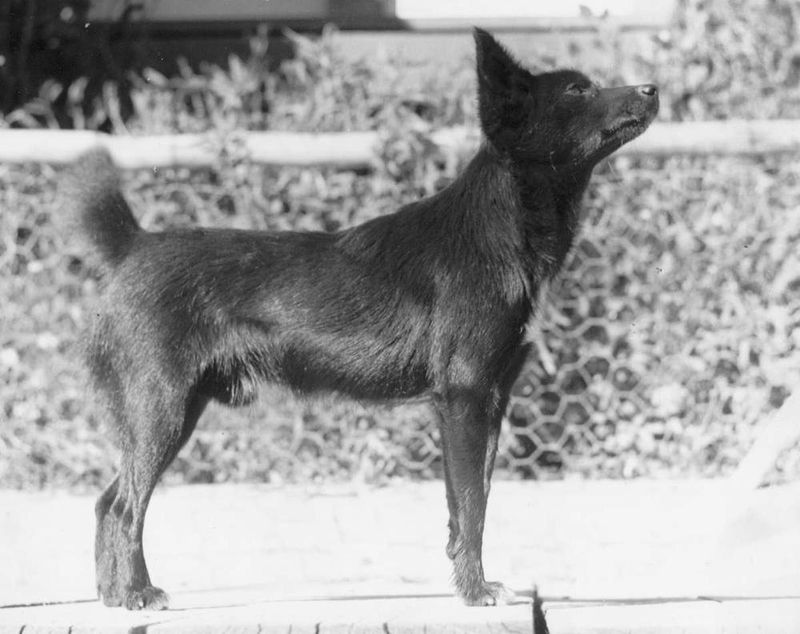
Native to the Tahltan First Nation territory in what is now British Columbia, these tiny but fearless hunters specialized in tracking and treeing bears. Standing just 14 inches tall, they would fearlessly chase bears until they climbed trees, allowing hunters to make their approach.
Their numbers dwindled dramatically when European diseases swept through indigenous communities. Cultural disruptions and the introduction of firearms changed traditional hunting methods. By 1971, only four purebred dogs remained, and with their passing, this ancient breed disappeared forever.
12. The Hawaiian Poi Dog
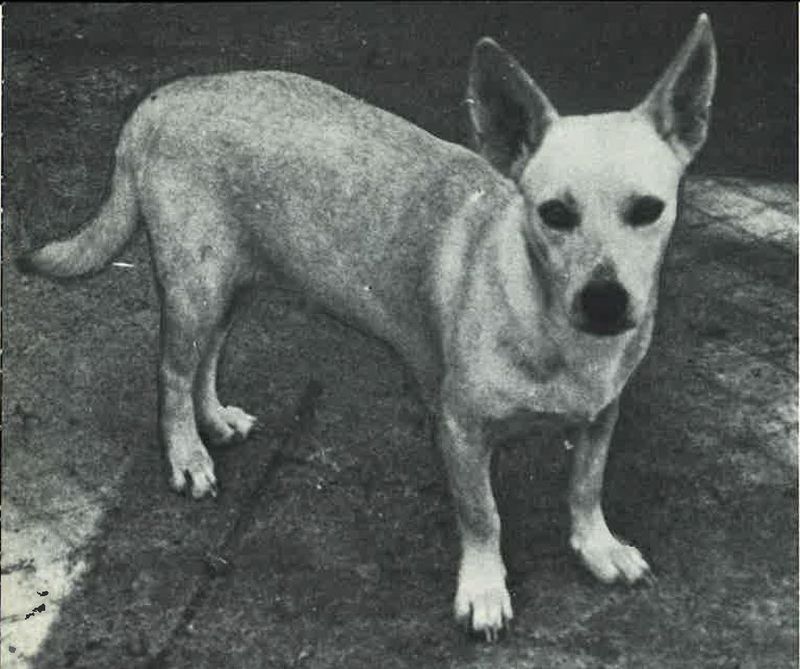
These stocky, short-legged companions arrived with Polynesian settlers to Hawaii around 300 CE. Unlike most ancient breeds, they weren’t working dogs—instead, they served as both spiritual protectors and, unfortunately, as occasional food sources during ceremonial feasts.
Western contact brought dramatic changes to Hawaiian culture and introduced numerous foreign dog breeds. Unrestricted crossbreeding diluted their unique characteristics.
Despite conservation attempts in the 1960s, the last dogs with significant Poi ancestry died in the 1970s, marking the end of this ancient Hawaiian breed.
13. The Tesem
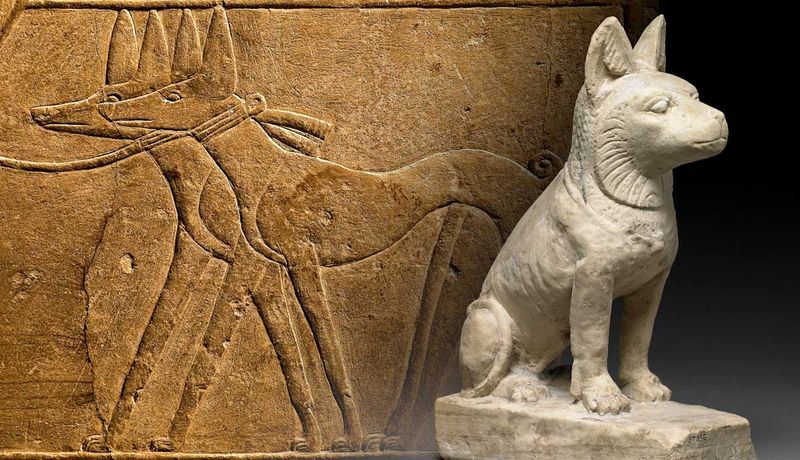
Depicted in countless ancient Egyptian artworks, these elegant, pointed-eared hunting dogs were so revered they were often mummified alongside pharaohs.
Their distinctive appearance – slender build with upright ears—made them instantly recognizable in hieroglyphics spanning thousands of years.
As Egypt fell under foreign rule repeatedly, these sacred dogs gradually disappeared through mixing with dogs from Greece, Rome, and beyond. The pure Tesem vanished by the end of the ancient Egyptian civilization, though some researchers believe they contributed to modern breeds like the Basenji and Pharaoh Hound.
14. The Hare Indian Dog

Indigenous peoples of Canada’s Northwest Territories relied on these small, fox-like dogs for hunting and transport in harsh Arctic conditions. Despite their delicate appearance, they showed remarkable endurance pulling small sleds and tracking game through snow.
European fur traders described them in detail during the 1800s, noting their gentle disposition. However, the introduction of larger working dogs from Europe proved devastating.
Crossbreeding with huskies and other sledding breeds quickly diluted their gene pool. By 1939, the distinctive Hare Indian Dog had completely disappeared.
15. The Alpine Mastiff
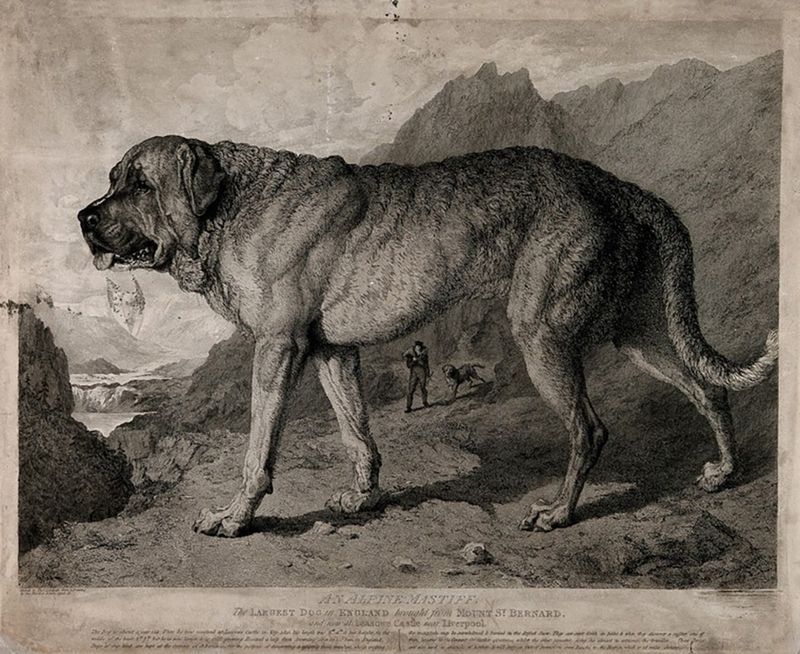
Enormous even by mastiff standards, these gentle giants patrolled mountain passes of the Swiss Alps for centuries. Monastery records describe dogs weighing over 200 pounds, using their massive bodies to clear paths through deep snow and find travelers buried in avalanches.
Their decline began when smaller, more agile Saint Bernards proved more practical for rescue work. Economic pressures during European wars made maintaining such large dogs impractical.
Crossbreeding with other mastiff types further diluted their bloodline until the distinct Alpine type disappeared by the 1900s.

